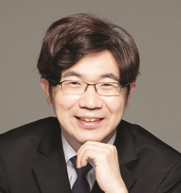
Yoon Jeongho, M.D.
Director
Jewelry Plastic Surgery, Korea
Neurophysiology
Clostridium botulinum produces seven serologically distinct toxin types, which are termed types A, B, C, D, E, F, and G. Type C is divided into subtypes C1 and C2 and type A has five subtypes(A1-A5). Among these, types A, B, and E primarily cause botulism in humans. In the natural state, botulinum toxin is a large protein complex joined by a bond between a toxic protein and one or more nontoxic proteins. Active toxic protein has the molecular weight of about 150kDa and is a dichain joined by a disulfide bond between 100kDa heavy chain and 50kDa light chain.
Toxic protein bonds with nontoxic protein and has the molecular weight of 300-900kDa. The molecular weight of type A, also known as the trade name of Botox, is 900kDa, whereas that of type B is 700kDa. Botulinum toxin acts on the neuromuscular junction. It blocks secretion of acetylcholine to induce flaccid paralysis. Botulinum toxin works selectively on cholinergic neurons due to its strong affinity to the ecto-acceptor of presynaptic motor nerve ending. The heavy chain of the toxic protein bonds with the ecto-acceptor and the light chain is released from the endocytotic vesicles to degrade the SNARE(soluble NSF attachment protein receptor) complex in charge of transmitting acetylcholine. Eventually, muscle fibers are functionally denervated, which leads to atrophy and flaccid paralysis.
Botulinum toxin takes effect about 6-36 hours after exposure and reaches maximum effect in 7-14 days. Afterwards, functional collateral sprouting restores neural transmission and the original neuromuscular junctions gradually recover full function in 3-6 months.
[Advertisement] MAGNUM(Q-switched Nd:YAG Laser) – Manufacturer: (www.i-dana.com)]
Comparison of products
Currently, out of nine botulinum toxin products globally available, seven are marketed in Korea excluding BTXA and Myobloc. Korea is the only country in the world with three manufacturers of botulinum toxin. In the US, Myobloc, Dysport, and Xeomin earned FDA approval in 2000, 2009, and 2010, respectively, following the approval of Allergan’s Botox in 1989. However, Botox stays a dominant market leader.
Botox
Botox has earned marketing approval in over 80 countries and takes up over 80% of the botulinum toxin market share in the world. Botox boasts 21 aesthetic and therapeutic indications, the most numerous of all FDA approved botulinum toxin products and has been in use for over two decades since 1989. Botox is a benchmark for many medical products.
Myobloc
Myoblock is the only product with the toxin type B and can be used in patients with antibodies to type A. Type B toxin takes effect more quickly than type A but the effect is also more short-lived due to the low titer. Along with Innotox, it’s the only liquid formulation and can be injected without dilution. As it may cause pain during injection due to its mild acidity, NaHCO₃ 0.01-0.05ml is diluted in the vial before injection. My obloc is currently not available in Korea.
Dysport
Dysport is marketed in over 60 countries. Besides Botox, it is also approved for aesthetic use by FDA. It is the only type A product that uses a unique, non-interchangeable biological activity unit of ‘speywood unit.’ Botox 1U is considered to be equivalent to Dysport 2.5U.
Xeomin
Xeomin’s key advantage is that it contains pure neurotoxin 150kDa. The risk of antibody-induced therapy failure is low due to a very low protein content of 0.6ng/ l00U. In fact, no antibody development was reported with Xeomin in over 1 million patients. Unopened vials of Xeomin can be stored up to 4 years at room temperature.
Meditoxin and Botulax
Meditoxin and Botulax are two Korean products that are expanding the domestic market share rapidly with their stable efficacy and affordable prices. Overseas exports of these products are also increasing.
Nabota
Nabota was a Korean product released in 2013 and boasts high-purity 900kDa neurotoxin.
Innotox
Innotox does not contain animal-derived products and human serum albumin, a common stabilizer used in the purification process of other botulinum toxin products. It is the only liquid formulation of type A toxin and can be used without dilution. Currently, only the 25U(0.625cc) formulation is available.
BTXA
Beside Botox, BTXA is the only other botulinum toxin product approved in China. As Korean products have become available and the prices have gone down, BTXA is no longer available in the Korean market. It is known to spread more easily after injection than Botox. Unopened vials must be refrigerated.
-The End-




















